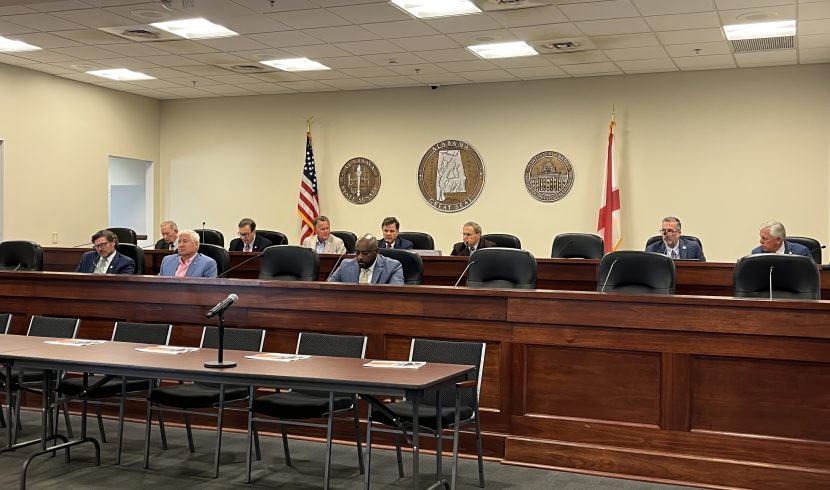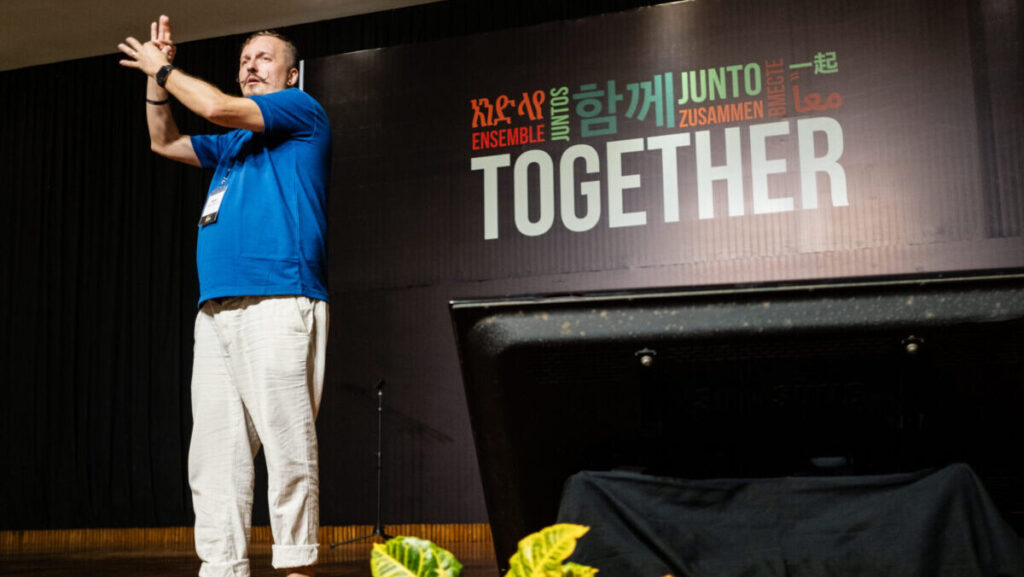Adam English admits he is a bit of an oddity as both a Baptist and a big fan of the saints.
But he’s also unapologetic about it.
“I was surprised, as a Baptist, that the word ‘saint’ is mentioned over 60 times in the New Testament alone,” said English, chair of the department of religion and philosophy at Campbell University in Buis Creek, North Carolina.
English has gained the reputation as a global authority on St. Nicholas of Myra since the 2012 publication of his book, “The Saint Who Would Be Santa Claus.”
The years of research, writing and speaking that have gone into that fourth century saint and bishop also have given English a deeper appreciation for the role of saints in the formation of Christianity.
And not only has he been surprised by how the modern concept of Santa Claus developed, but also how open many Baptists and other Protestants are in modeling their lives after those of St. Nicholas and other saints.
“It’s almost as if we have, in 2015, come to the end of some of that Reformation prejudice against the saints,” he said.
English shared how he developed an interest in the historical person behind Santa Claus and how it has impacted his faith.
Q: What’s a Baptist doing writing about saints?
A: There are a couple of things relevant to the Baptist context. One is that I am finding that Baptist churches and pastors are more and more interested in connecting with their own tradition and their own history, especially in churches where parents want to celebrate the holidays and feeling that Santa is so commercial and overdone. We want to reconnect with our own Christian heritage and more and more you’re finding Baptist churches that are interested in connecting with St. Nicholas.
Q: What made this topic so interesting to you?
A: The more I started to read the theology of the Church, the more I realized it is connected with the lives of the saints, the Christian exemplars, the ones who brought this faith to life. … There is a tendency among Baptists who want to take theology seriously to argue these intellectual ideas of theology and Trinity and atonement and so on. But the more I looked at it the more I realized the Church has never argued these things abstractly. … So you think of St. Augustine or St. Aquinas: They’re preaching and talking as much about the saints and the people who have modeled the faith as they are about the ideas of the faith. To me that was a real and necessary thing to do as a theology.
Q: How and when did this Santa interest begin?
A: My wife asked me the same question: ‘Wait a minute, when did we get into Santa?’
I lead study abroad trips to Italy with the students. I learned that St. Nicholas was buried in Italy and more importantly there was an archive library attached to the basilica that held his remains. Then I discovered … that in terms of English-speaking scholars, no one had really looked into this. So I went over there and looked at some of the documents and I felt like there was a real story to be told from these primary sources. … That was about five years ago.
Q: What did you find through that research?
A: The real discovery in looking at the primary documents reveals there really are two St. Nicholas figures. There’s the one we associated with, St. Nicholas of Myra, and there was St. Nicholas of Sion (in modern-day Turkey), who lives more than 100 years later. He was named after St. Nicholas [of Myra]. … In the 10th century these two stories got merged together and that merging stuck down to our own times. … Together the two stories make for a more exciting story.
Q: Who was St. Nicholas of Myra — and where is Myra?
A: On the southeast coast of what is today Turkey. In Acts, Paul makes a stop in Myra. … I really would say two characteristics stand out about him: his generosity, for sure, and also his sense of justice. … He was known to give away his wealth in creative and anonymous nighttime gifts. And there are a number of other stories about his sense of justice. He defends three innocent men in town who are about to be executed and secures their release, then tracks down the judge who took bribes to have these men executed and scolds him severely.
Q: What about the life of St. Nicholas is a model for Christians today?
A: Generosity and justice. I think those are the two things we can pick up on. I don’t want to take away from family traditions of gift giving or the Santa Claus traditions for young kids. … But I would add to the tradition. December 6 is St. Nicholas’ Day, so here is an opportunity early in the Advent season for families to do something Nicholas-like. And doing something Nicholas-like is doing something Christlike.
Q: What sorts of actions earned St. Nicholas that reputation?
A: The most famous story is about him delivering three anonymous nighttime gifts to families that had fallen into destitution. … He comes by in the middle of the night and drops bags of gold through their windows.
Q: Do you know where the red suit and sleigh and all the rest of it originated?
A: It’s an absolutely American creation and it comes really through the early 1800s … from various promoters looking for traditions that feel nostalgic. They pick up on this character from Europe where there has always been a St. Nicholas involved in the season. But then the ‘Night before Christmas’ transforms this character into this magical gift-giver and very much about the family and domesticating him for the family. Then you have the artists who start to render this image and these Coca-Cola commercials in the 1930s that really fixed the image of Santa Claus for us.
Q: How has all of this changed your experience of this season?
A: For me it has added a depth. … I’ve become more enamored with all the parts of Christmas, including the lawn ornaments that go with it. Christmas is the only time of year when the sacred and the silly come together. … And it’s a time when we can be with family and work for justice and generosity — and all this can go together. (BNG)






Share with others: